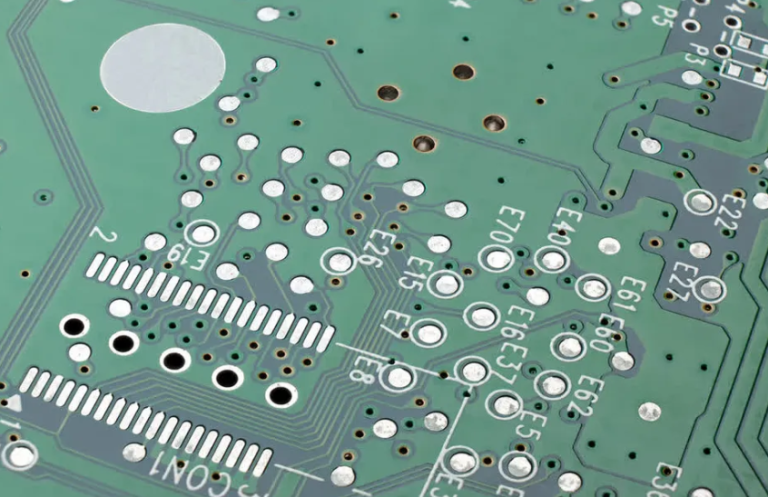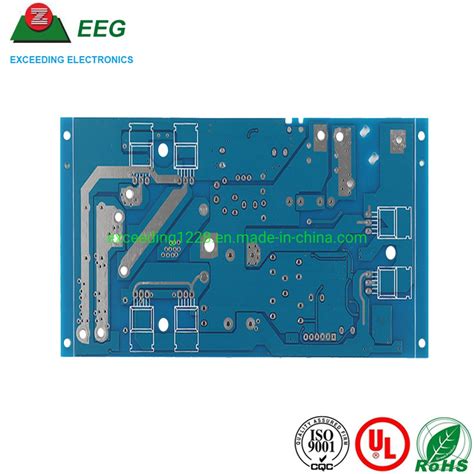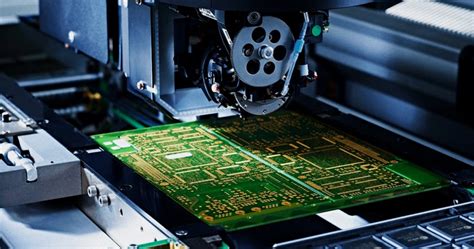Innovative Solutions in Arlon PCB Technologies and Applications
Key Takeaways
When discussing Arlon PCB technologies, it’s essential to recognize the pivotal role of innovative laminate materials in enhancing performance across various applications. These materials not only optimize the pcb manufacturing process but also significantly reduce the overall pcb manufacturing cost by ensuring efficiency and reliability. In today’s competitive landscape, you may find numerous pcb manufacturing companies that leverage Arlon’s advancements to meet the demanding requirements of high-frequency designs and complex circuitry. Understanding how these companies integrate cutting-edge technologies into their operations can provide you with insight on how to streamline your own pcb manufacturing business practices. By focusing on durability and reliability, Arlon’s solutions align perfectly with your need for high-performance printed circuit boards, making them a compelling choice for advanced electronics applications in various industries. For more detailed information on these technologies and their implementations, you can explore resources from reputable sources like Andwin PCB.
Innovative Laminate Materials for High-Performance PCBs
In the realm of pcb manufacturing, the development of innovative laminate materials is crucial for enhancing the capabilities of high-performance printed circuit boards (PCBs). You might find that these advanced materials, such as those developed by Arlon, are specifically engineered to withstand the rigors of demanding environments while maintaining electrical integrity. Utilizing these laminate materials not only improves pcb manufacturing cost efficiency but also allows pcb manufacturing companies to deliver products that can endure high-frequency applications. The unique properties of Arlon’s advanced laminates facilitate enhanced thermal management and signal performance, which are pivotal in modern electronic devices. By leveraging these innovative materials, your pcb manufacturing business can reduce the incidence of failures and extend the lifespan of PCBs. Consequently, adopting such cutting-edge solutions enables you to stay competitive in an ever-evolving technological landscape, ensuring your products meet and exceed industry standards.
Applications of Arlon PCB Technologies in Advanced Electronics
The demand for advanced electronics continues to rise, and with it, the need for high-performance PCBs that can withstand rigorous operating conditions. Arlon PCB technologies offer innovative solutions tailored to meet these challenges. For instance, Arlon’s proprietary laminate materials enhance the thermal stability and dielectric properties required for high-frequency applications. This is particularly crucial in sectors such as telecommunications, aerospace, and medical devices, where reliability is paramount. By utilizing these specialized materials, you can lower the overall PCB manufacturing cost while ensuring superior performance. Furthermore, as you explore various PCB manufacturing companies, it becomes evident that those incorporating Arlon technologies often produce boards that exhibit remarkable durability and resilience under extreme conditions. In addition to improving performance metrics, these applications also contribute to a more sustainable approach in the PCB manufacturing business, aligning with your commitment to environmentally responsible practices. Therefore, investing in Arlon PCB technologies not only supports cutting-edge applications but also positions your projects at the forefront of innovation in the electronics industry.
Comparative Analysis: Arlon vs. Traditional PCB Materials
When you consider the evolving landscape of PCB manufacturing, it is essential to evaluate the advantages of Arlon PCB technologies in comparison to traditional materials. Arlon PCBs utilize advanced laminate materials that offer superior performance in demanding environments, setting them apart from conventional options. Traditional PCB manufacturing companies have primarily relied on standard FR-4 laminates, which, although cost-effective, often fall short regarding thermal management and electrical performance. In contrast, Arlon’s high-performance PCBs exhibit enhanced thermal stability and lower dielectric loss, making them ideal for applications in high-frequency scenarios and advanced electronics, such as aerospace and telecommunications.
As you analyze the pcb manufacturing cost associated with these materials, it’s important to note that while Arlon products may present a higher upfront investment, the long-term benefits — including greater reliability and lower failure rates in critical applications — can ultimately lead to reduced overall costs. The investment in an Arlon pcb manufacturing business could yield substantial returns for industries that prioritize performance and durability over initial expenses. By focusing on this innovative approach to PCB design and production, your operation can leverage the strengths of Arlon technologies while effectively positioning itself in a competitive marketplace where quality is paramount.
Challenges and Solutions in High-Frequency PCB Design
In the realm of high-frequency PCB design, various challenges arise that can significantly impact performance and reliability. You may encounter issues such as signal loss, crosstalk, and impedance mismatches, which can compromise the efficiency of your circuits. However, there are innovative approaches available through Arlon PCB technologies that provide effective solutions to these challenges. The utilization of high-performance laminate materials in Arlon PCBs plays a crucial role in mitigating these issues. For instance, these materials are engineered to offer superior dielectric properties that help maintain signal integrity across a range of frequencies.
Moreover, as you work with pcb manufacturing and seek the right pcb manufacturing companies, understanding the nuances of material selection can significantly influence your overall costs. The investment in advanced laminate technologies may initially appear high; however, the long-term benefits—such as reduced signal degradation and improved thermal management—can lead to lower pcb manufacturing costs overall. By adopting these solutions, you can not only address performance issues but also enhance the reliability and longevity of your designs. Consequently, integrating Arlon PCB technologies into your high-frequency projects stands as a strategic decision in your pcb manufacturing business, ensuring that you remain competitive in an ever-evolving electronics landscape.
Durability and Reliability in Arlon PCB Solutions
When considering durability and reliability in Arlon PCB solutions, it is essential to understand how these characteristics play a pivotal role in the success of your electronic applications. The laminate materials utilized in Arlon PCBs are specifically engineered to withstand extreme conditions, such as high temperatures and environmental stressors, ensuring that the circuits perform optimally over time. This reliability is a decisive factor when selecting a partner among various PCB manufacturing companies, as the longevity of your product could greatly affect overall costs and performance.
In your quest for effective electronic solutions, you will notice that Arlon PCBs not only meet but often exceed industry standards for endurance. These solutions adeptly tackle issues related to moisture absorption, thermal cycling, and mechanical stress, which are common challenges faced by traditional PCB platforms. For example, compared to typical materials, Arlon’s specially formulated laminates demonstrate significantly lower failure rates under similar conditions.
Here’s an informative comparison of Arlon PCBs against conventional materials:
| Feature | Arlon PCBs | Traditional PCBs |
|---|---|---|
| Heat Resistance | High | Variable |
| Moisture Absorption | Minimal | High |
| Mechanical Stress Tolerance | Excellent | Moderate |
| Lifespan | Extended | Shorter |
By choosing Arlon PCB technology for your business needs, you are investing in a solution that prioritizes durability without compromising on performance. This means lower PCB manufacturing costs due to fewer replacements and repairs over time, making it a sound decision for any forward-thinking PCB manufacturing business aiming to enhance their product reliability and customer satisfaction.
With these innovative solutions at your disposal, you can confidently navigate the complexities of high-performance electronics—knowing that durability and reliability are firmly on your side.
Future Trends in PCB Technology and Arlon’s Role
As technology continues to advance, the landscape of PCB manufacturing is evolving rapidly, with Arlon at the forefront of these innovations. Modern PCB manufacturing companies are increasingly focusing on high-performance applications that require unique and robust materials. The future of PCB manufacturing will see Arlon’s advanced laminate materials playing a significant role in meeting the challenges posed by high-frequency circuits and demanding environments. By developing solutions that enhance durability and reliability, Arlon not only assists you in reducing overall manufacturing costs but also ensures that your products are engineered to withstand extreme operational conditions. As you engage with PCB manufacturing business practices, staying attuned to the evolving requirements will empower you to leverage Arlon’s advanced technologies effectively. With emerging trends such as enhanced materials for better thermal management and miniaturization capabilities, the prospects for high-performance PCBs are more promising than ever, positioning Arlon as a critical player in your journey towards innovation and excellence in electronics.
Case Studies: Successful Implementations of Arlon PCBs
Arlon PCBs have found remarkable success in various industries, showcasing their innovative laminate materials and versatile applications. For instance, in the aerospace sector, a leading manufacturer utilized Arlon’s advanced PCB technologies to create lightweight, yet robust circuit boards that withstand extreme temperatures and vibrations. This implementation not only enhanced performance but also reduced the overall pcb manufacturing cost, demonstrating that investment in high-quality materials pays off in durability and reliability.
Furthermore, major pcb manufacturing companies have reported significant improvements in efficiency and consistency through the integration of Arlon materials in their production lines. With Arlon technology, manufacturers are able to push the limits of high-frequency PCB design, addressing challenges once thought insurmountable. According to one industry expert, “> The reliability of a PCB is paramount; using advanced laminates significantly reduces risk factors associated with failure.” This insight encourages more businesses to consider Arlon PCBs as a strategic option for ensuring product quality while optimizing their pcb manufacturing business framework.
This growing recognition underscores not only the benefits of adopting state-of-the-art technologies but also positions Arlon as a leader in providing solutions that meet demanding industry needs for performance and longevity. Whether it’s telecommunications or medical devices, the real-world applications speak volumes about how Arlon’s innovations are reshaping expectations and outcomes across various fields.
Sustainable Practices in Arlon PCB Manufacturing
In today’s rapidly evolving technology landscape, sustainable practices in Arlon PCB manufacturing have become essential for both environmental responsibility and competitive advantage. Many PCB manufacturing companies are recognizing that the path to sustainability can be both profitable and innovative. For instance, the adoption of eco-friendly raw materials not only reduces environmental impact but can also lead to significant savings in PCB manufacturing costs. By leveraging advanced recycling techniques, you can reduce waste and promote a circular economy within your PCB manufacturing business. Furthermore, implementing energy-efficient processes throughout the manufacturing pipeline contributes to lower operational costs while minimizing carbon footprints. As a customer, selecting manufacturers committed to sustainability not only aligns with your values but also ensures you receive high-quality products that support long-term performance in demanding applications. By focusing on environmentally responsible practices today, you help shape a more sustainable future for the electronics industry as a whole.
Conclusion
In summary, the advancements in Arlon PCB technologies are shaping the future of high-performance electronics, revealing new possibilities for PCB manufacturing. By utilizing innovative laminate materials, PCB manufacturing companies are now able to design boards that meet the rigorous demands of modern applications, such as telecommunications and aerospace. This progress addresses not only the performance requirements but also the cost-effectiveness of PCB manufacturing, helping businesses to maintain competitiveness in a rapidly evolving market. Moreover, with rising awareness of sustainability, many companies involved in PCB manufacturing business are seeking to implement practices that reduce environmental impacts while optimizing durability and reliability. As these technologies continue to evolve, remaining informed about Arlon’s expanding role will be essential for anyone invested in the future of electronics design and manufacturing. Thus, exploring innovative solutions within this realm can significantly enhance both your understanding and application of effective PCB technologies.
FAQs
What are the advantages of using Arlon PCB materials?
Arlon materials are known for their exceptional thermal stability, electrical performance, and mechanical strength, making them ideal for high-performance PCBs. They excel in demanding environments, ensuring reliability and durability in advanced electronics.
How do Arlon PCBs compare to traditional PCB materials?
Compared to traditional materials, Arlon PCBs offer superior performance in high-frequency applications and harsh conditions. This can result in lower PCB manufacturing costs, as they reduce the likelihood of failures and enhance overall product lifespan.
What challenges do PCB manufacturing companies face when using high-frequency materials?
Challenges include managing signal integrity, minimizing losses, and maintaining consistent impedance control. Understanding these can improve the effectiveness of your PCB manufacturing business, leading to better end products.
What role does durability play in designing Arlon PCBs?
Durability is crucial as it directly affects the longevity and reliability of electronic components. Arlon’s laminated materials are specifically engineered to withstand extreme conditions while maintaining performance.
What future trends should I consider in PCB technology?
Emerging trends include advancements in sustainable practices and increased use of flexible electronics. Keeping an eye on these innovations can help your PCB manufacturing companies adapt more effectively.
For more information on efficient processes in pcb manufacturing, please click here: Andwin PCB Manufacturing.






